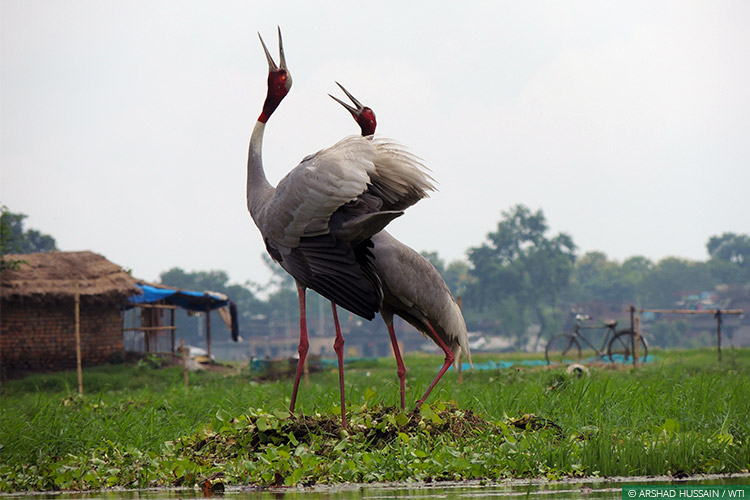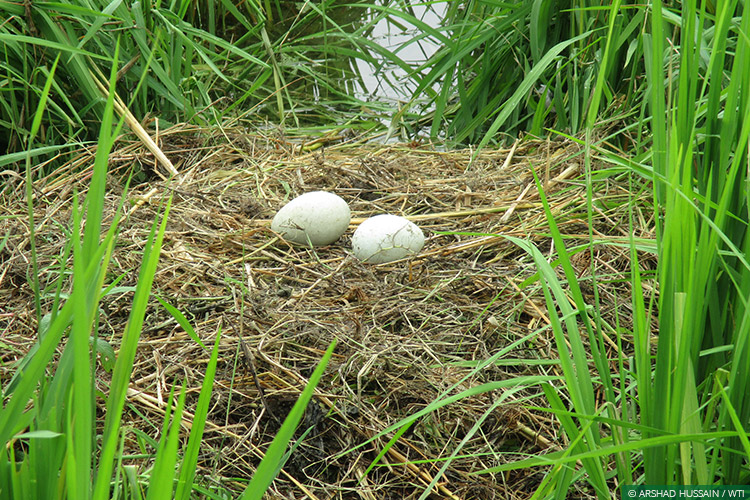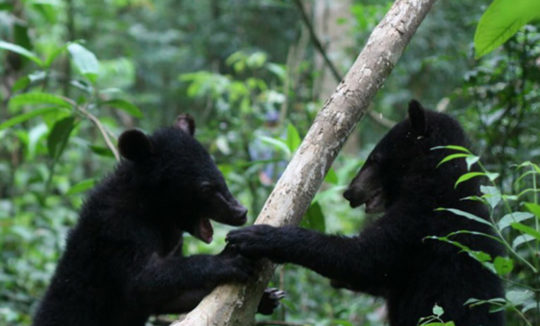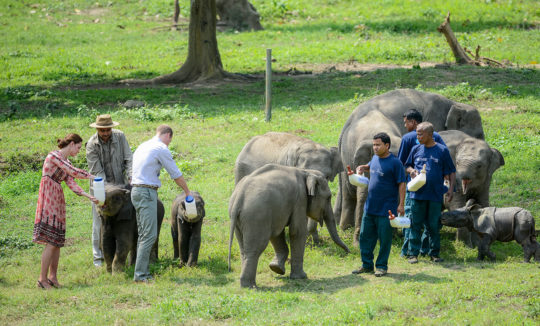Project Info
Project Description
THAT THE SARUS CRANE IS ABLE TO DANCE FOR JOY in the agricultural flatlands of eastern Uttar Pradesh is thanks in no small measure to the Sarus Crane Conservation Project, run across 10 districts of the state by WTI in collaboration with Tata Trusts and with support from the UP Forest Department. The project works through local volunteers (called ‘Sarus Mitra’ or Friends of the Sarus), Tata Trust partner NGOs working in the area, and Sarus Protection Committees (SPCs) formed from village communities that have, without financial inducement, stepped forward to conserve this iconic bird and the wetlands that sustain it.
Uttar Pradesh is a stronghold of the sarus crane, India’s only resident breeding crane and the world’s tallest flying bird. There is an estimated population of over 13,000 individuals here and the sarus has been designated the official State Bird. Yet most of this population, 73 per cent according to a Wildlife Institute of India survey, is concentrated in the western districts of Mainpuri, Etawah, Etah and Aligarh. As recently as five years ago eastern UP was totally off the radar as a region of conservation importance for the species.
 Wildlife in tamed lands: sarus cranes perform a courtship dance near a natural wetland surrounded by farmlands
Wildlife in tamed lands: sarus cranes perform a courtship dance near a natural wetland surrounded by farmlands
Reports of a significant population on the farmlands first came in from field representatives of Tata Trusts, which has worked with the farmers in the area on sustainable agricultural practices since 2010. Tata Trusts consulted with WTI about a possible collaboration to protect the sarus; in 2013 the Sarus Crane Conservation Project took wing.
The draining and 'reclamation' of natural wetlands has forced the sarus crane onto flooded croplands
The presence of sarus cranes on farmlands is in itself unsurprising. The widespread draining and ‘reclamation’ of wetlands for agriculture or infrastructure development has forced the bird onto flooded croplands, particularly rice paddy fields, which provide an approximation of its natural habitat. The sarus, though, asserts its preference when nesting season comes around every year. The project’s findings show that 80 per cent of sarus nesting sites fall within four to five kilometres of the remaining natural inland wetlands, such as lakes, ponds and oxbow lakes, which lie in the midst of agricultural wetlands.
These small wetlands are critical for the sarus and other avifauna in the region, besides providing ecological services such as groundwater recharge, water purification, moderation of both flood and drought conditions, and preservation of biodiversity. Yet they are, for the most part, unnoticed and neglected. The 30 water bodies identified in eastern UP as Important Sarus Wetland Sites occupy about 100 sq km (9561 ha) – yet 75 per cent of this is not part of any Protected Area or larger landscape level conservation plan.
 A sarus nest on the margins of a paddy field in eastern Uttar Pradesh (nest photographs are taken for documentation purposes only during the monitoring process, and without disturbing the nest, birds or chicks.)
A sarus nest on the margins of a paddy field in eastern Uttar Pradesh (nest photographs are taken for documentation purposes only during the monitoring process, and without disturbing the nest, birds or chicks.)
The project works to monitor and protect sarus nests on the Important Sarus Wetlands Sites and local croplands. In this the role of the Sarus Mitra and Sarus Protection Committees is crucial: over 20 SPCs have been established under the project, to educate farmers on why it is in their own interest not to disturb the cranes that nest on their fields, to keep an eye out for poachers and those who would steal the eggs. They also keep track of hatchlings and document the progress of the chicks.
Each village SPC receives a pair of binoculars, a digital camera for documentation, and a book on Indian birds by Dr Salim Ali to better identify indigenous species. Office-bearers are also given capacity-building and leadership skills training to pass on to the rest of their team.
As of the 2017 nesting season, the Sarus Crane Conservation Project has identified, monitored and provided protection to 493 sarus nests across eastern UP with the help of local communities. Crucial work is also being done at the Important Sarus Wetland Sites to improve water-use patterns, ensuring that the depleting water bodies will survive till the monsoon comes around each year to replenish them.
PARTNERS: Tata Trusts, UP Forest Department
PROJECT LEAD: Dr. Samir Kumar Sinha













